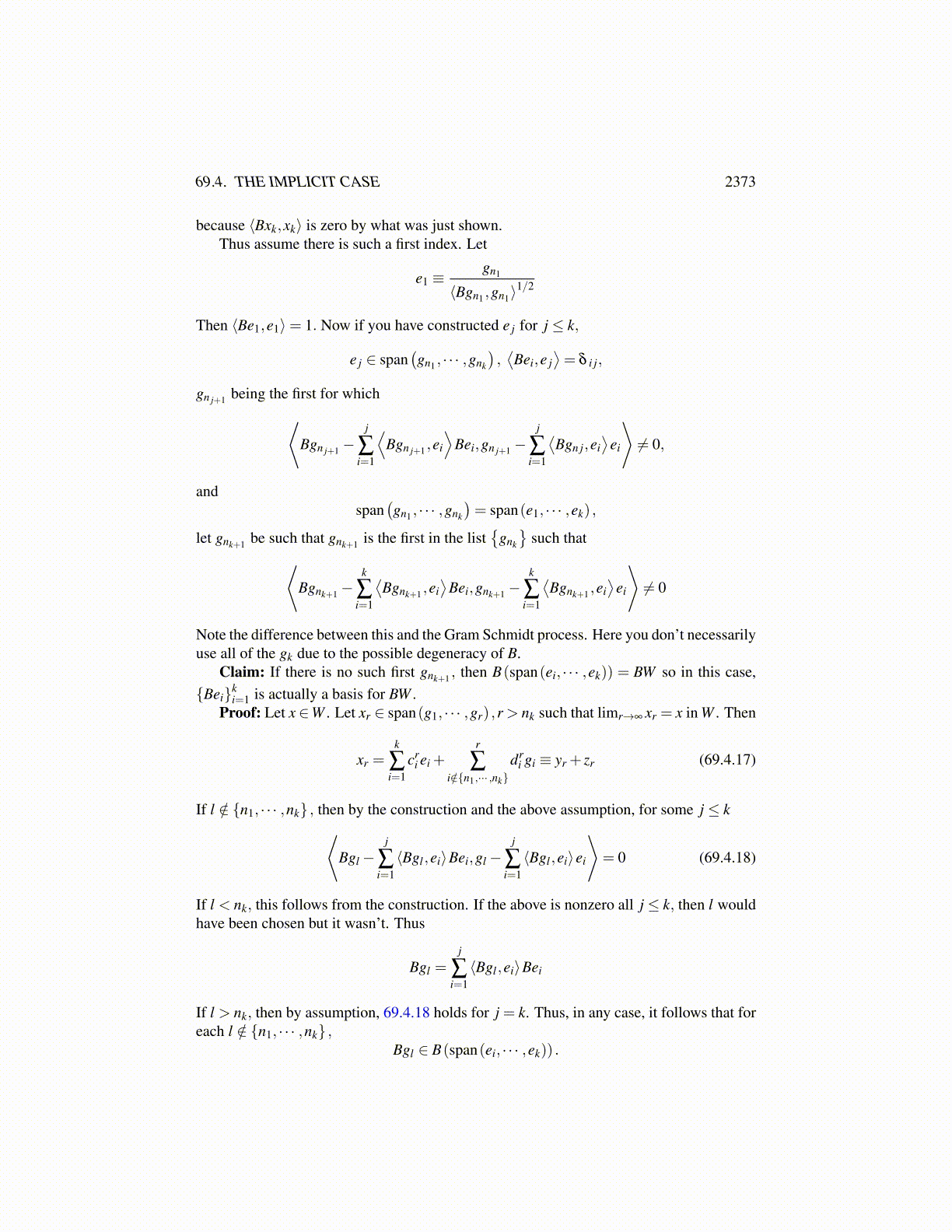
69.3. AN IMPORTANT FORMULA 2373
It remains to verify that this holds for all t. Let t /∈ D and let t (k) ∈Pk be the largestpoint of Pk which is less than t. Suppose t (m)≤ t (k) so that m≤ k. Then
X (t (m)) = X0 +∫ t(m)
0Y (s)ds,
a similar formula for X (t (k)) . Thus for t > t (m) ,
X (t)−X (t (m)) =∫ t
t(m)Y (s)ds
which is the same sort of thing already looked at except that it starts at t (m) rather than at0 and X0 = 0. Therefore,
|X (t (k))−X (t (m))|2 = 2∫ t(k)
t(m)⟨Y (s) ,X (s)−X (t (m))⟩ds
Thus, for m≤ klim
m,k→∞
|X (t (k))−X (t (m))|2 = 0
Hence {X (t (k))}∞
k=1 is a convergent sequence in H. Does it converge to X (t)? Let ξ (t)∈Hbe what it does converge to. Let v ∈V. Then
(ξ (t) ,v) = limk→∞
(X (t (k)) ,v) = limk→∞
⟨X (t (k)) ,v⟩= ⟨X (t) ,v⟩= (X (t) ,v)
because it is known that t→ X (t) is continuous into V ′ and it is also known that X (t) ∈ Hand that the X (t) for t ∈ [0,T ] are uniformly bounded. Therefore, since V is dense in H, itfollows that ξ (t) = X (t).
Now for every t ∈ D, it was shown above that
|X (t)|2 = |X0|2 +2∫ t
0⟨Y (s) ,X (s)⟩ds
Thus, using what was just shown, if t /∈ D and tk→ t,
|X (t)|2 = limk→∞
|X (tk)|2 = limk→∞
(|X0|2 +2
∫ tk
0⟨Y (s) ,X (s)⟩ds
)= |X0|2 +2
∫ t
0⟨Y (s) ,X (s)⟩ds
which proves the desired formula. From this it follows right away that t → X (t) is con-tinuous into H because it was just shown that t → |X (t)| is continuous and t → X (t) isweakly continuous. Since Hilbert space is uniformly convex, this implies the t → X (t) iscontinuous. To see this in the special cas of Hilbert space,
|X (t)−X (s)|2 = |X (t)|2−2(X (s) ,X (t))+ |X (s)|2
Then limt→s
(|X (t)|2−2(X (s) ,X (t))+ |X (s)|2
)= 0 by weak convergence of X (t) to
X (s) and the convergence of |X (t)|2 to |X (s)|2.